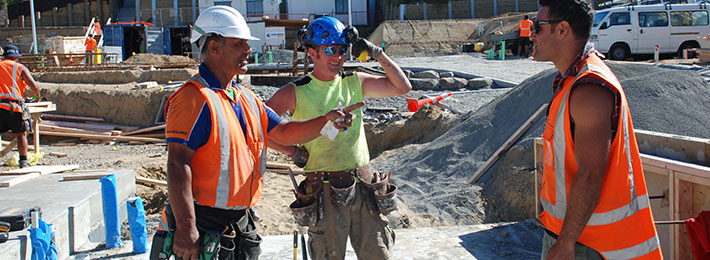Stopping the workplace bully
26 Aug 2016, Featured, Prove Your Know How, Safety

Bullying or intimidating behaviour on a worksite may stem from poor planning, and can lead to workers taking unnecessary risks
Most employers have policies in place to deal with workplace bullying. Construction is one industry with a culture that can give rise to bullying behaviour.
This can come in the form of the saying ‘harden up’, which can force workers to step out of their comfort zones and perform unsafe acts.
Not only does bullying affect people physically and mentally, it can disrupt workplaces, reduce profits and reduce productivity through:
- Increased time off.
- Unhappy staff.
- More mistakes and accidents.
- Resignations.
- Bad reputation.
- Difficulty recruiting.
- Poor quality and customer service.
Types of bullying
Bullying falls into two categories:
- Personal attacks (direct) – the most common and easily recognised.
- Task-related attacks (indirect) – often goes unnoticed.
- Personal attacks (direct) typically focus on one person. Examples include making belittling remarks, insults, threats, excluding staff and physical attacks.
- Task-related attacks (indirect) are linked to the victim’s actual work. Examples include giving unachievable tasks, not giving the appropriate training or tools for the job and supplying incorrect information.
You need to keep your eyes peeled for the many ways that bullying can take place. Bullies can target an individual or a group of workers using a range of methods to get to their victim(s), including through text, email, social media and before or after work.
What creates the onsite bully?
Construction projects can be stressful, as budgets and deadlines are often tight. Site Safe has identified that workers knowingly violate safety rules because of pressure from their boss or their peers to take shortcuts.
It’s easy to tell workers to ‘be safe’, but when they and their employers are under pressure to meet a deadline, workers understand the unwritten rules that say ‘just get the job done’. It’s at that point that unsafe behaviour arises, as there is often a view that safety slows you down.
Quality planning is the answer
A well thought-out plan that incorporates health and safety from the beginning will improve a company’s safety performance by generating:
- Good contractor and employee relationships.
- Effective communication.
- Better problem solving.
- Improved project planning and productivity.
- Staff empowered to make decisions.
- Monitored accountabilities.
Safe workers have a higher morale and are more productive. They can make huge improvements to the business by helping to identify and solve problems, contribute to planning and communications efforts and through overall better effort.
By expecting and understanding the hazards and risks involved in a job, then planning for them, safety and productivity naturally follow.
Site Safe provides free templates to assist your health and safety planning, available from sitesafe.org.nz/sssp.
WorkSafe NZ provides a free guide, Preventing and responding to workplace bullying, which includes support, examples and guidance for businesses and individuals about a widespread workplace hazard.
What to do
If you think you or someone at work is being bullied, keep records of what is happening and try to sort it immediately.
Use someone you trust as a sounding board to explore ways of responding–maybe your boss, HR team (if you have one), family or friends.
Site Safe is a not-for-profit, membership based organisation that promotes, inspires and supports a culture of health and safety in New Zealand construction.
Register to earn LBP Points Sign in



